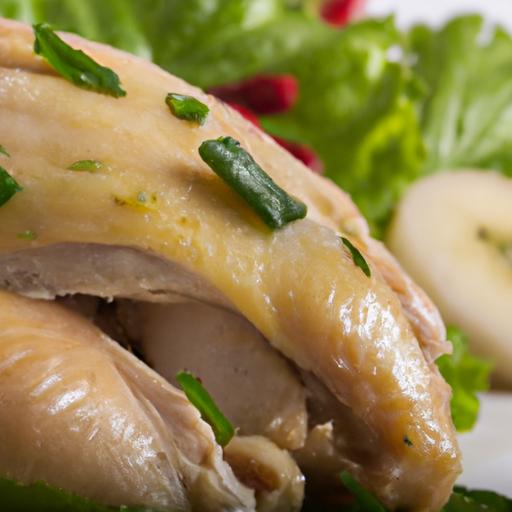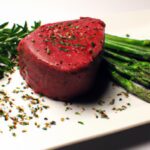Imagine biting into a perfectly cooked chicken with skin that crackles and dances with flavor-each crisp bite a delight to the senses. But what if, before it ever hit the heat, that skin was wet and clammy? How does moisture cling to chicken skin transform the cooking process, and ultimately, your meal? In this article, we unravel the sizzling science and culinary secrets behind cooking chicken with wet skin. Get ready to discover why those droplets of water matter more than you think, and how mastering this often-overlooked detail can elevate your chicken-cooking game to mouthwatering new heights.
Understanding the Science Behind Wet Chicken Skin and Cooking Outcomes
What happens when you cook chicken with wet skin? The presence of moisture on chicken skin dramatically influences the texture and crispiness that we crave in perfectly cooked poultry. Moisture creates a barrier that prevents the skin from reaching those delightful, golden, crackling peaks of crispiness by steaming rather than roasting. But with a clear understanding of this science, you can turn even wet chicken skin into a mouthwatering masterpiece.
The Impact of Moisture on Crispiness and Texture in Chicken Skin
When chicken skin is wet, either due to rinsing or natural juices, the water must evaporate before the skin starts to crisp. This extended steaming phase can leave the skin limp and rubbery instead of crispy. The fat underneath the skin also plays a role-it needs to render and brown without excess water in the way. Balancing moisture removal with heat application is crucial. Too much moisture means slow drying and soggy skin, while too high heat too soon can burn the outside without cooking the inside.
Techniques to Achieve Perfectly Crispy Skin When Starting with Wet Chicken
Mastering wet chicken skin involves a combination of proper drying, seasoning, and cooking methods. Here are the proven techniques:
- Pat dry thoroughly: Use paper towels to blot every surface of the chicken skin. Even slight dampness can extend cooking time.
- Air-dry in the fridge: Arrange your chicken uncovered on a rack in the refrigerator for at least 2 hours or overnight. This evaporates moisture slowly, intensifying skin crispiness.
- Use salt as a drying agent: Salt draws out residual moisture. Season the skin generously before cooking but not too far in advance to avoid saltiness.
- Cook with dry heat techniques: Roasting, grilling, or pan-searing in a hot, well-oiled pan encourages fat to render crisply without trapping steam.
- Avoid overcrowding: Chicken pieces need space for air circulation; too close together will trap moisture and steam the skin.
Practical Tips to Avoid Common Pitfalls and Enhance Flavor in Wet Skin Cooking
Beyond moisture control, flavor and presentation elevate the dish. Here are essential tips for success:
- Start with room temperature chicken: Cold chicken increases cooking time, which can lead to uneven crisping.
- Add aromatics to the skin: A light brush of oil infused with garlic, herbs, or spices enhances both texture and taste.
- Use a thermometer: Target an internal temperature of 165°F (74°C) to ensure juicy meat without drying out.
- Finish under the broiler: For stubborn soggy spots, a quick broil blast helps achieve a final crispy layer.
- Rest the chicken: Let it rest on a cooling rack to avoid steam accumulating beneath and softening the skin.
Prep and Cook Time
- Preparation: 15 minutes (additional 2-12 hours for air drying optional but recommended)
- Cook Time: 25-40 minutes depending on method and cut
Yield
Serves 4 hungry guests
Difficulty Level
Medium – Requires planning ahead and attention to detail but yields stunning results
Ingredients
- 4 bone-in, skin-on chicken thighs
- 1 teaspoon fine sea salt
- 1/2 teaspoon freshly ground black pepper
- 2 tablespoons olive oil or rendered chicken fat
- 2 cloves garlic, finely minced
- 1 teaspoon fresh rosemary, chopped
- Optional: lemon zest for garnish
Instructions
- Pat the chicken thighs thoroughly dry using paper towels. For best results, place them on a wire rack in the fridge uncovered for at least 2 hours to dry the skin further.
- Preheat your oven to 425°F (220°C).
- Combine the olive oil, garlic, and rosemary in a small bowl. Lightly brush the mixture over the chicken skin.
- Season each thigh generously with salt and pepper.
- Heat a large oven-safe skillet over medium-high heat. Add a tablespoon of olive oil or chicken fat and let it shimmer.
- Place the chicken skin-side down in the skillet, spacing pieces apart to avoid overcrowding. Sauté until skin turns golden brown and crisp, about 6-8 minutes. Avoid moving the chicken to prevent tearing the skin.
- Flip the chicken thighs carefully, then transfer the skillet to the preheated oven.
- Roast uncovered for 20-25 minutes until the internal temperature reads 165°F (74°C) and juices run clear.
- Optional: For extra crispness, place the skillet under the broiler for 1-2 minutes, watching closely to avoid burning.
- Remove from oven and place chicken on a rack for 5 minutes to rest, allowing residual heat to redistribute and moisture to escape.
- Serve with a sprinkle of fresh lemon zest and herbs for brightness.
Chef’s Notes
- For even crispier skin, substitute the oven step with finishing on a grill over indirect heat.
- Try substituting rosemary with thyme or smoked paprika for different aromatic profiles.
- If time is tight, patting dry thoroughly and searing immediately still produces great results.
- Leftover cooked chicken makes an incredible addition to salads or sandwiches-skin-on for maximum flavor.
Serving Suggestions
Present the chicken thighs on a rustic wooden board or warming platter to emphasize the golden skin. Pair with roasted root vegetables or a crisp green salad tossed in a light vinaigrette for balance. Garnish with fresh lemon wedges and a sprinkle of chopped herbs like parsley or dill to pop color and aroma.
| Nutrient | Per Serving |
|---|---|
| Calories | 370 kcal |
| Protein | 30 g |
| Carbohydrates | 0 g |
| Fat | 27 g |

Discover even more about moisture and cooking techniques in our Perfect Roast Chicken guide. For scientific insights into the Maillard reaction and moisture control, check out this informative resource from ScienceDirect.
Q&A
Q&A: What Happens When You Cook Chicken with Wet Skin? Insight Revealed
Q1: Why does it matter if the chicken skin is wet before cooking?
A1: Think of chicken skin like a canvas-if it’s wet, water stands between the heat and the skin. This moisture barrier prevents proper browning and crisping, often leading to rubbery, soggy skin instead of that golden, crunchy delight we crave.
Q2: Can I just pat the skin dry and still get great results?
A2: Absolutely! Drying the skin with paper towels removes excess moisture, allowing the heat to sear the skin evenly. This step is crucial for caramelization, the Maillard reaction, which creates the mouthwatering color and flavor we love.
Q3: What exactly happens in the pan or oven if the chicken skin is wet?
A3: When you start cooking wet chicken skin, the water first has to evaporate before the skin can heat up enough to brown. This steaming effect not only slows down the cooking process but can also trap moisture under the skin, ruining texture and flavor.
Q4: Does cooking chicken with wet skin impact food safety?
A4: The safety comes from cooking the chicken to the proper internal temperature, so wet skin doesn’t inherently cause food safety issues. However, the uneven cooking from wet skin could mean some parts cook faster than others, so it’s wise to use a meat thermometer regardless.
Q5: Are there any hacks to manage wet skin when you’re in a hurry?
A5: If you’re short on time, try a quick air-dry step-leave the chicken uncovered in the fridge for 20-30 minutes to let surface moisture evaporate. Alternatively, increase the oven temperature slightly to help crisp the skin, but watch carefully to avoid burning.
Q6: Can marinating or brining affect skin crispness?
A6: Yes! Wet marinades add moisture, so if you plan to marinate, always pat the skin dry before cooking. Dry brining, which involves salting the chicken and letting it rest uncovered, actually helps draw out moisture and promote crispy skin.
Q7: What’s the best cooking method for crispy chicken skin?
A7: High-heat roasting or pan-searing works wonders. Both methods rely on direct, dry heat to render fat and create crispness. But remember: they demand dry skin before cooking to truly shine.
In Summary:
Cooking chicken with wet skin often leads to steamed, limp results rather than crispy perfection. For that coveted crunch, dry the skin thoroughly, be mindful of marinating, and use high heat. Your taste buds will thank you!
Wrapping Up
In the culinary journey of cooking chicken, the state of its skin can make all the difference between a crispy masterpiece and a soggy disappointment. Cooking chicken with wet skin may seem like a small detail, but as we’ve uncovered, it plays a pivotal role in texture, flavor, and overall satisfaction. By understanding the science behind moisture and heat, you’re now equipped to transform your chicken dishes from merely edible to irresistibly golden and crisp. So next time you prepare your favorite recipe, remember: patience and a dry towel may be your kitchen’s best allies in crafting that perfect, mouthwatering bite. Happy cooking!


